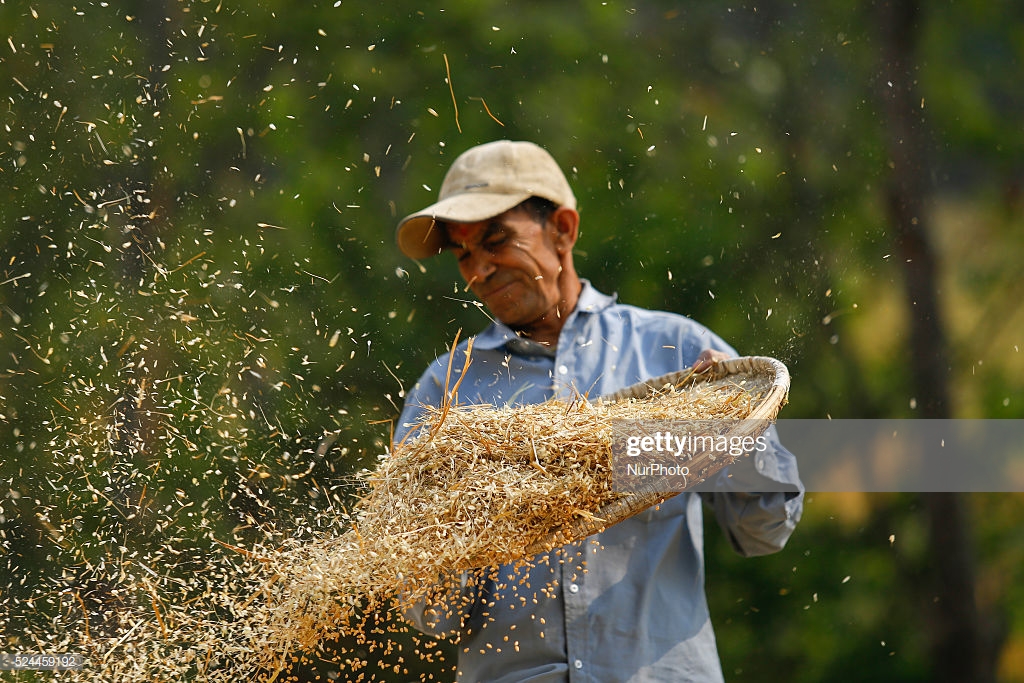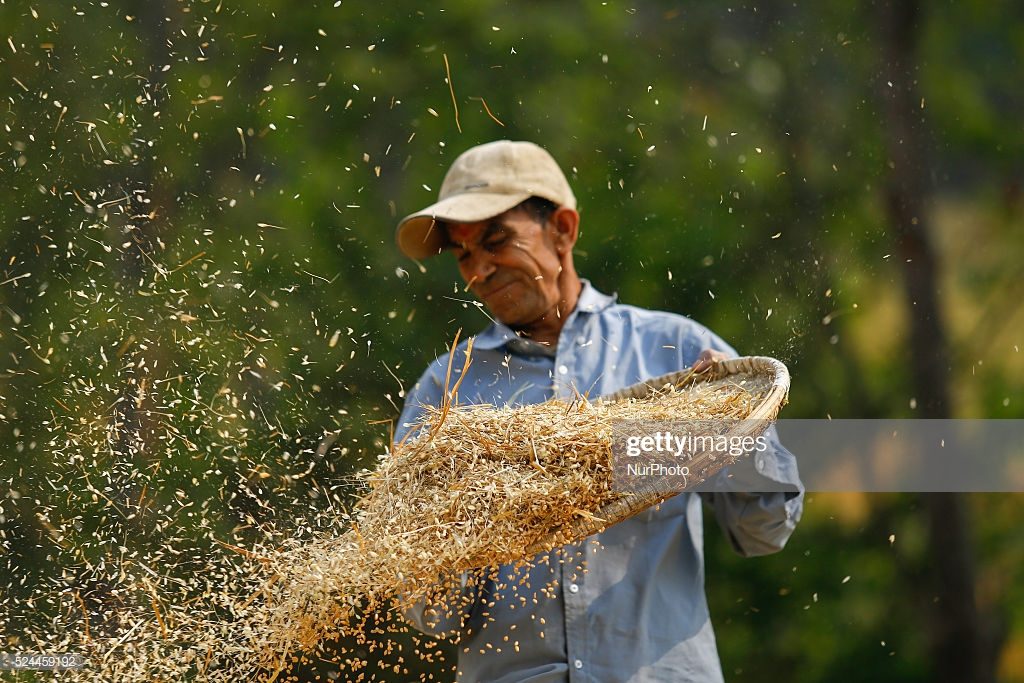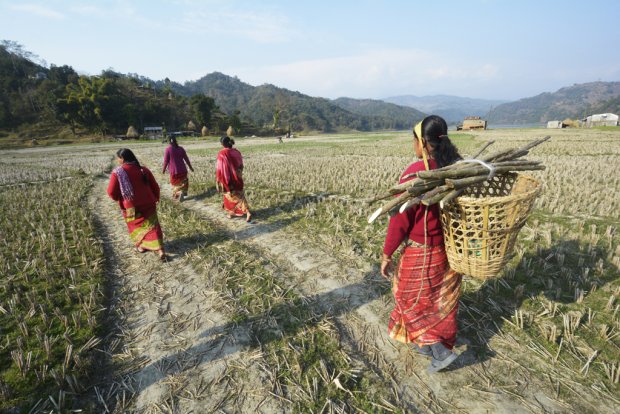Wheat harvest: Output set to hit 3-yr high


Nepal’s winter wheat output is expected to hit a three-year high of 1.93 million tonnes this fiscal year, making it the second biggest wheat harvest in the country’s history despite prolonged winter drought, according to preliminary statistics of the Agricultural Ministry.
The estimated winter wheat output of this fiscal year is 5 percent more than in 2016-17. This harvest is expected to generate revenue of about Rs43 billion based on average price of wheat of Rs22 per kg. Harvesting of this year’s winter wheat started in mid-March in southern Tarai plains.
The country suffered winter drought this fiscal year affecting cash crops like mustard, lentils and vegetables, but the intense cold wave that swept through the southern Tarai for nearly a month proved to be boon for wheat production.
Chilly weather, according to experts, is good for wheat as it helps boost yields.
“Cold wave in the Tarai was one of the biggest factors for better wheat yields. But other factors like use of improved and drought-resistant seeds and installation of shallow tubewells in key Tarai districts also raised production,” said Ram Krishna Regmi, chief statistician at the Agricultural Ministry. According to the ministry, about 45 percent of the wheat acreage is now covered by improved variety of seeds.
Wheat production also went up due to use of machines in the farm sector.
Wheat makes the third largest contribution to Nepal’s agricultural output after paddy and maize. The contribution of wheat in agricultural GDP is over 7 percent, according to the Central Bureau of Statistics.
The country witnessed record wheat output of 1.97 million tonnes in 2014-15. Wheat output plunged 12.1 percent to a six-year low of 1.73 million tonnes in 2015-16 due to winter drought. The production jumped 6 percent in 2016-17, reaching 1.84 million tonnes.
According to the Food and Agriculture Organisation (FAO) of the United Nations, winter crops were in good condition in most parts of the country and production prospects are positive. Some concerns exist only for wheat crops in central Tarai plains, including the districts of Parsa, Bara and Rautahat, where water availability was limited due to damages inflicted by last year’s floods to the irrigation infrastructure, the FAO said.
Nepal is likely to import 930,000 tonnes of cereal grains, mainly rice, in 2017-18, which is similar to the previous year’s level and 12 percent above the five-year average, according to the FAO. Imports of wheat and maize are anticipated to remain close to the 2016-17 level of 150,000 and 200,000 tonnes, respectively. Rice imports are projected to increase by 5 percent in 2018 to 580,000 tonnes, the FAO said.
Nepal’s paddy output is expected to top 5.15 million tonnes in this fiscal year, down 1.49 percent from 2016-17, mostly on account of the August floods in the southern Tarai plains, the ministry said.
Despite the drop, the harvest will still be second biggest in the country’s history. The marginal drop in paddy production will not affect the country’s economic growth as the loss has been offset by abundant maize production, according to the ministry.
Annual Harvest
Year Output (in tonnes)
2017-18 1.93 million
2016-17 1.84 million
2015-16 1.73 million
2014-15 1.97 million
2013-14 1.88 million
2012-13 1.88 million
2011-12 1.84 million
2010-11 1.74 million
2009-10 1.55 million
2008-09 1.34 million
(Source: Agricultural Ministry)

 Pitambar Sigdel
Pitambar Sigdel



Feedback